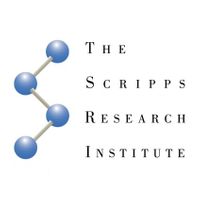LA JOLLA, CA – November 16, 2016 – A new study led by scientists at The Scripps Research Institute (TSRI) describes an unexpected role for proteins involved with our daily “circadian” clocks in influencing cancer growth.
The research, published recently in the journal
Molecular Cell, suggests that disruptions in circadian rhythms might leave levels of an important cancer-linked protein, called cMYC, unchecked.
“This appears to have big implications for the connection between circadian rhythms and cancer,” said TSRI biologist Katja Lamia, senior author of the study.
There is growing evidence that shift work and frequent jet lag can raise a person’s risk of cancer, suggesting a link between daily rhythms and cell growth. “We know this connection exists, but we haven’t known
why,” said Lamia.
The researchers focused on proteins called cryptochromes, which evolved from bacterial proteins that sense light and repair DNA damage caused by sunlight. In humans, these proteins, called CRY1 and CRY2, regulate our circadian clocks, which influence what times of day we become tired, hungry and much more.
Using cells from mouse models, the researchers demonstrated that deleting the gene that expresses CRY2 reduced the cells’ ability to degrade a protein called cMYC. Without CRY2 keeping cMYC at normal levels, the researchers saw increased cell proliferation—similar to the abnormal growth seen in cancers.
Further studies of protein structures suggested that CRY2 is a key player in a process to “mark” cMYC for degradation. The researchers said it is significant that this process occurs after gene transcription—once the proteins are already produced—rather than during transcription, as in many other cryptochrome functions.
“This is a function of a circadian protein that has never been seen before,” said TSRI Research Associate Anne-Laure Huber, who served as first author of the study.
The researchers say more studies are needed to confirm this connection between circadian clocks and cancer in human tissues.
In addition to Lamia and Huber, authors of the study, “
CRY2 and FBXL3 Cooperatively Degrade c-MYC,” were Stephanie J. Papp, Alanna B. Chan, Sabine D. Jordan, Anna Kriebs and Madelena Nguyen of TSRI; Emma Henriksson of TSRI and Lund University; Martina Wallace and Christian M. Metallo of the University of California, San Diego; and Zhizhong Li of the Genomics Institute of the Novartis Research Foundation and Novartis Institutes for Biomedical Research.
This study was supported by the National Institutes of Health (grants DK090188, DK097164, CA188652 and NIGMS P41-GM103311), the Searle Scholars Program through the Kinship Foundation, the Sidney Kimmel Foundation, the Lung Cancer Research Foundation, the Swedish Research Council, the Deutsche Forschungsgemeinschaft and the American Heart Association (grant 15POST22510020).
This article was originally published on
Scripps.edu.









